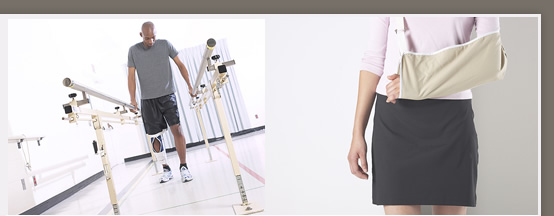

Ladder safety to reduce personal injuries |
|
There are many jobs that require working from a height such as window cleaners, scaffolders and roofers to name a few. These industries are vital to modern living; however, working from height can be perilous. During 2004 and 2005 almost 3800 suffered serious personal injuries as a result of a fall from height at work and a further 53 fell to their death. The majority of these falls were found to be a result of bad management. In many cases inadequate training is given to employees about the health and safety involved with working at height. This can result in employees causing accidents at work that result in personal injuries to themselves or others. Unsafe equipment such as ladders or harnesses that are worn or faulty could also cause workers to fall from height and result in serious head, neck, back or spinal cord injuries and even death. These issues are worsened by the fact that some employers do not even recognise that they have potentially dangerous health and safety issues within their company. This negligence of health and safety practices in the workplace needs to be overcome. The Health and Safety Commission Injury Reduction Programme which aims to reduce personal injury and fatality rates of falls from height by 2010 has already set the wheels in motion. In 2005 new guidelines regarding the use of ladders in the workplace was put in place to protect workers from falls and reduce the soaring personal injury rates. Here are a few more measures that may further prevent the likelihood of falls from ladders: When should a leaning ladder be used? Work should be carried out on stable platforms with a proper edge to prevent falls. Ladders should ideally only be used to transport workers from one platform to another. Otherwise, leaning ladders should be used to carry out simple tasks taking no more than half an hour to prevent the risk of fatigue that could cause a fall and potential personal injuries. Before stepping onto a ladder * Make sure you are wearing sensible footwear * Wear clothing of a sensible length so that it does not cause you to trip * Check that the ladder is in good condition * Make sure the ground is level and firm before leaning the ladder * Make sure that the surface is not wet or slippery before leaning the ladder * Slope the ladder at a safe distance using a suitable device (maximum slope 16 degrees, minimum slope 6 degrees) * Secure the ladder at the top so it will not slip * Leave around 1 metre at the top so that workers have something to grip * Make sure your work area is well lit * Keep the area surrounding your ladder tidy to prevent anybody tripping and knocking the ladder When on a ladder * Always grip the ladder when climbing, placing each foot carefully on each rung * Do not let go of the ladder - only perform tasks that need one hand * Make sure that you have your balance before attempting any tasks while on the ladder * Do not overreach when on the ladder, move the ladder closer So if you are employed within an industry that involves working from height on either ladders or scaffolding then take care. Abide by these simple safety rules to decrease the likelihood that you will be involved in an accident at work and end up sustaining serious or in extreme cases fatal injuries. If you do sustain a personal injury from a work accident which was not your fault then remember that you may be eligible to make a compensation claim. |
© Copyright Sapmail.net All rights reserved. Unauthorized duplication in part or whole strictly prohibited by international copyright law. |